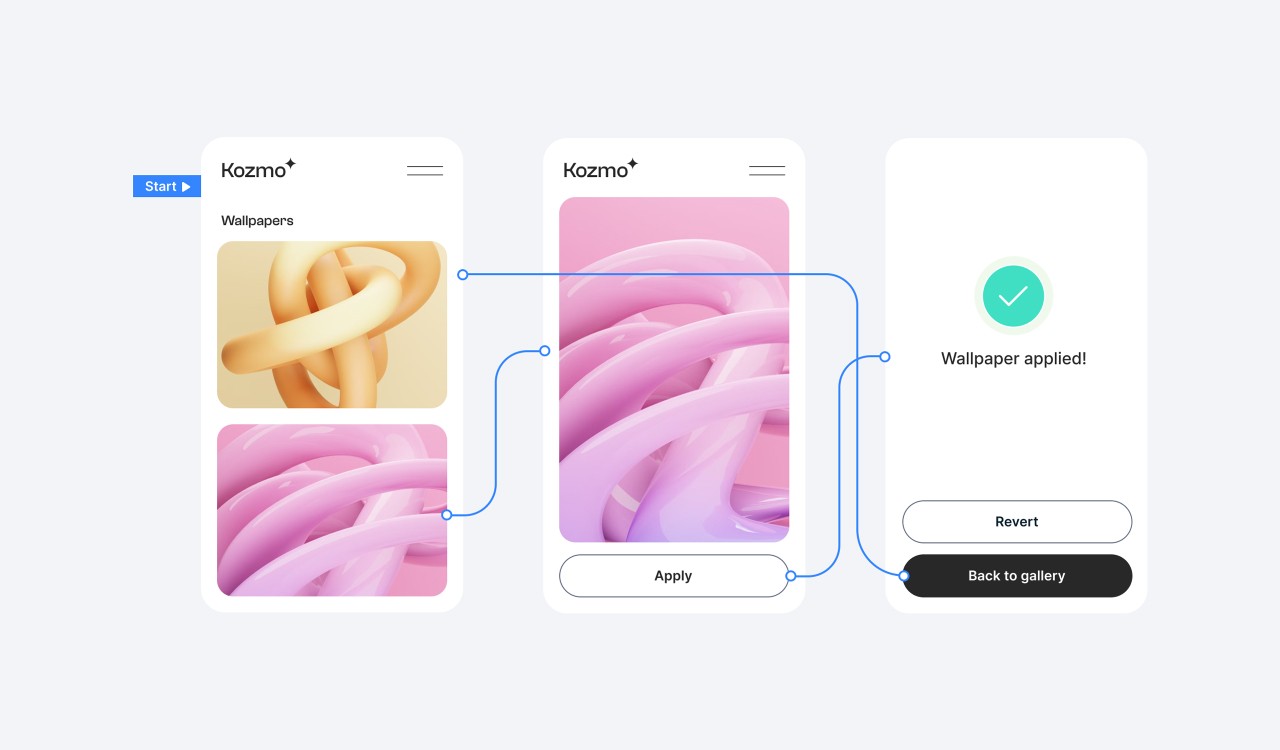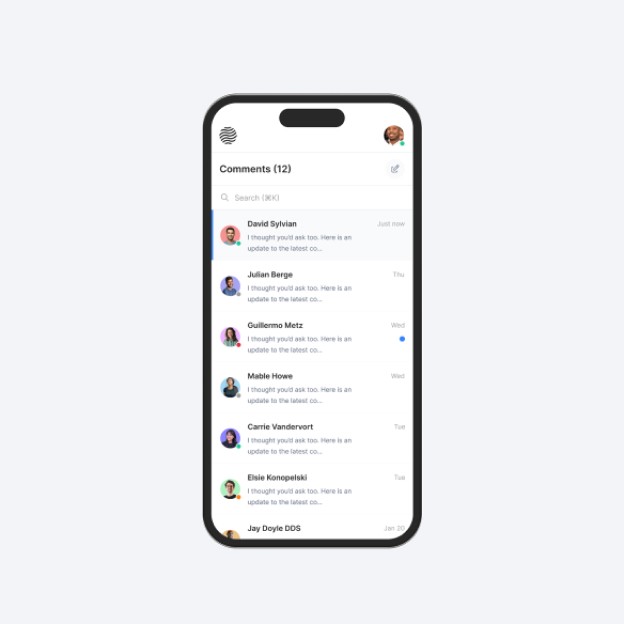Sensease
An app that offers a centralized location for a user's coping techniques, designed to empower sensory-sensitive individuals to access public events with greater ease.
Timeline
Sep - Dec 2023, 4 months
Role
UX Designer & Researcher — Feature Scoping, User Research, Interaction Design, Visual Design, Prototyping, User Testing
Team
Ashley Frith, Katie McIntyre, Benedicte Knudson, Margot Lin, Hang Wang
01 / Problem Background
Public events present barriers for sensory-sensitive individuals
Context
Sensory-sensitive individuals demonstrate heightened responses to stimuli, and often struggle at public events not designed with their needs in mind. This sensitivity can hinder their participation, causing them to miss out on valuable experiences and community engagement.
Problem Statement
How might we improve the comfort and accessibility of public events for sensory-sensitive individuals?
02 / Outcome
Solution
User Scenarios
Sensory-sensitive individuals demonstrate heightened responses to stimuli, and often struggle at public events not designed with their needs in mind. This sensitivity can hinder their participation, causing them to miss out on valuable experiences and community engagement.



Information Architecture: Sitemap
Sensory-sensitive individuals demonstrate heightened responses to stimuli, and often struggle at public events not designed with their needs in mind. This sensitivity can hinder their participation, causing them to miss out on valuable experiences and community engagement.
Mid-Fi Wireframes
Sensory-sensitive individuals demonstrate heightened responses to stimuli, and often struggle at public events not designed with their needs in mind. This sensitivity can hinder their participation, causing them to miss out on valuable experiences and community engagement.
Accessibility
After grounding our research insights, I audited Tatum’s current website with our two personas in mind.
Accessibility Practices Used:
1. Follow Web Content Accessibility Guidelines (WCAG), Level AAA
2. Do not rely on color alone to differentiate and display information
3. Use a color-blind-safe color palette
03 / Research Review
How do we begin to understand our problem space, as well as the pain points of our users?

Findings & Insights
Overview
Sensory-sensitive individuals demonstrate heightened responses to stimuli, and often struggle at public events not designed with their needs in mind. This sensitivity can hinder their participation, causing them to miss out on valuable experiences and community engagement.
03 / Needs & Opportunities
Users' Major Demands
Accessible
Many people in our surveys and interviews expressed that sound and social overstimulation were their most sensitive stimuli, facing physical and emotional reactions to overstimulation.
Humanistic
People with sensory sensitivities prefer environments with familiar people and controlled sensory inputs, as well as discrete and flexible coping tools that provide tactile feedback.
Support
Being able to participate in public events plays a vital role in forging community and interpersonal connections, allowing those with sensory sensitivities to fit in with social norms.
04 / Ideation
Design Requirements
Result of Findings
After analyzing our findings, we produced six requirements we deemed necessary for our design:
Provide some form of feedback to users.
Behave predictably and consistently to prevent added stress.
Support flexible customizability for diverse tolerances to sensitivities.
Promote user's continued engagement with event versus removal from an event.
Discrete and portable to prevent feelings of alienation in marginalized groups.
Enhance user comfort.
Design Process
Result of Findings
After analyzing our findings, we produced six requirements we deemed necessary for our design:
Provide some form of feedback to users.
Behave predictably and consistently to prevent added stress.
Support flexible customizability for diverse tolerances to sensitivities.
Promote user's continued engagement with event versus removal from an event.
Discrete and portable to prevent feelings of alienation in marginalized groups.
Enhance user comfort.



Information Architecture: Sitemap
Sensory-sensitive individuals demonstrate heightened responses to stimuli, and often struggle at public events not designed with their needs in mind. This sensitivity can hinder their participation, causing them to miss out on valuable experiences and community engagement.
Mid-Fi Wireframes
Sensory-sensitive individuals demonstrate heightened responses to stimuli, and often struggle at public events not designed with their needs in mind. This sensitivity can hinder their participation, causing them to miss out on valuable experiences and community engagement.
Accessibility
After grounding our research insights, I audited Tatum’s current website with our two personas in mind.
Accessibility Practices Used:
1. Follow Web Content Accessibility Guidelines (WCAG), Level AAA
2. Do not rely on color alone to differentiate and display information
3. Use a color-blind-safe color palette
05 / Iteration
Design Evaluation
Background
Sensory-sensitive individuals demonstrate heightened responses to stimuli, and often struggle at public events not designed with their needs in mind. This sensitivity can hinder their participation, causing them to miss out on valuable experiences and community engagement.
How might we empower sensory-sensitive individuals to experience public events?
06 / Moderated User Testing
User Usability Testing
Session
We conducted moderated lab usability testing with four middle-aged testing participants on the spectrum of being DeafBlind to interact with our website prototype and collect qualitative data on its accessibility.
Types of Feedback Received:
Live commentary and feedback as they navigated our Figma prototype using free exploration and our focused tasks (“Where would you go to find product development updates?”).
Distinct body language and facial expressions they made (such as squinting their eyes or craning their neck closer to the screen).
Takeaways
We conducted moderated lab usability testing with four middle-aged testing participants on the spectrum of being DeafBlind to interact with our website prototype and collect qualitative data on its accessibility.
Types of Feedback Received:
Live commentary and feedback as they navigated our Figma prototype using free exploration and our focused tasks (“Where would you go to find product development updates?”).
Distinct body language and facial expressions they made (such as squinting their eyes or craning their neck closer to the screen).
07 / Final Designs
User Usability Testing
Session
We conducted moderated lab usability testing with four middle-aged testing participants on the spectrum of being DeafBlind to interact with our website prototype and collect qualitative data on its accessibility.
Design System
We conducted moderated lab usability testing with four middle-aged testing participants on the spectrum of being DeafBlind to interact with our website prototype and collect qualitative data on its accessibility.
08 / Conclusion
Reflection
Lessons
We conducted moderated lab usability testing with four middle-aged testing participants on the spectrum of being DeafBlind to interact with our website prototype and collect qualitative data on its accessibility.
Next Steps
We conducted moderated lab usability testing with four middle-aged testing participants on the spectrum of being DeafBlind to interact with our website prototype and collect qualitative data on its accessibility.
02
Research Methods
Literature & Social Media Review
Justification:
Comprehensive insight
Foundation for studying problem space
Resources:
PubMed
Association for Computing Machinery (ACM)
Google Scholar
Community-based websites
Data Obtained:
Characteristics of primary group
Description of practices and goals
Description of stakeholders
Social implications
Analysis:
Findings discussion, Zotero database
Ethnographic Observation
Justification:
In-depth understanding of users' real-world behaviors and needs in natural environments
Context-specific insights
Data Obtained:
Jottings, images
Analysis:
Coding jottings, group discussion
Semi-Structured Interview
Carnegie Hall's programming is centered around music, while its main competitor, Lincoln Center, offers a wider range of offerings in addition to music such as opera, ballet, and theater. In a positioning matrix, Carnegie Hall and its competitors are compared against two main factors:
Specificity vs. Variety: Carnegie Hall falls specific with its sole focus on music, while Lincoln Center leans varied with its many types of cultural experiences.
Rational vs. Emotional Benefits: Carnegie Hall offers rational benefits through its educational programs, appealing to people who want to learn and appreciate music. Music venues such as the Bowery Ballroom tend to offer emotional benefits by providing recreational experiences rather than educational.
Survey
Carnegie Hall's programming is centered around music, while its main competitor, Lincoln Center, offers a wider range of offerings in addition to music such as opera, ballet, and theater. In a positioning matrix, Carnegie Hall and its competitors are compared against two main factors:
Specificity vs. Variety: Carnegie Hall falls specific with its sole focus on music, while Lincoln Center leans varied with its many types of cultural experiences.
Rational vs. Emotional Benefits: Carnegie Hall offers rational benefits through its educational programs, appealing to people who want to learn and appreciate music. Music venues such as the Bowery Ballroom tend to offer emotional benefits by providing recreational experiences rather than educational.
Participatory Design Workshop
Carnegie Hall's programming is centered around music, while its main competitor, Lincoln Center, offers a wider range of offerings in addition to music such as opera, ballet, and theater. In a positioning matrix, Carnegie Hall and its competitors are compared against two main factors:
Specificity vs. Variety: Carnegie Hall falls specific with its sole focus on music, while Lincoln Center leans varied with its many types of cultural experiences.
Rational vs. Emotional Benefits: Carnegie Hall offers rational benefits through its educational programs, appealing to people who want to learn and appreciate music. Music venues such as the Bowery Ballroom tend to offer emotional benefits by providing recreational experiences rather than educational.
Audience Interviews
Having conducted interviews with 15 participants ranging from ages 19 to 27, findings reveal varied perceptions of Carnegie Hall and Lincoln Center. Participants generally view Carnegie Hall as traditional and somewhat intimidating due to its grandiose architecture and established reputation. It is primarily associated with classical music and holds a strong historical allure, although there is a notable lack of detailed knowledge among some participants. Famous performances add to its appeal, yet awareness of its educational programs and student ticket options is low. In contrast, Lincoln Center is seen as more convenient, casual, and versatile, offering a broader range of cultural experiences beyond classical music.
Takeaways & Opportunities
Emphasize Carnegie Hall's emotional benefits through branding and messaging.
Promote the institution's educational outreach to strengthen ties with the local community.
Utilize social media and other promotion channels to increase awareness among younger audiences.
Create interactive experiences that highlight Carnegie Hall’s history and architecture in a more engaging and approachable manner.
